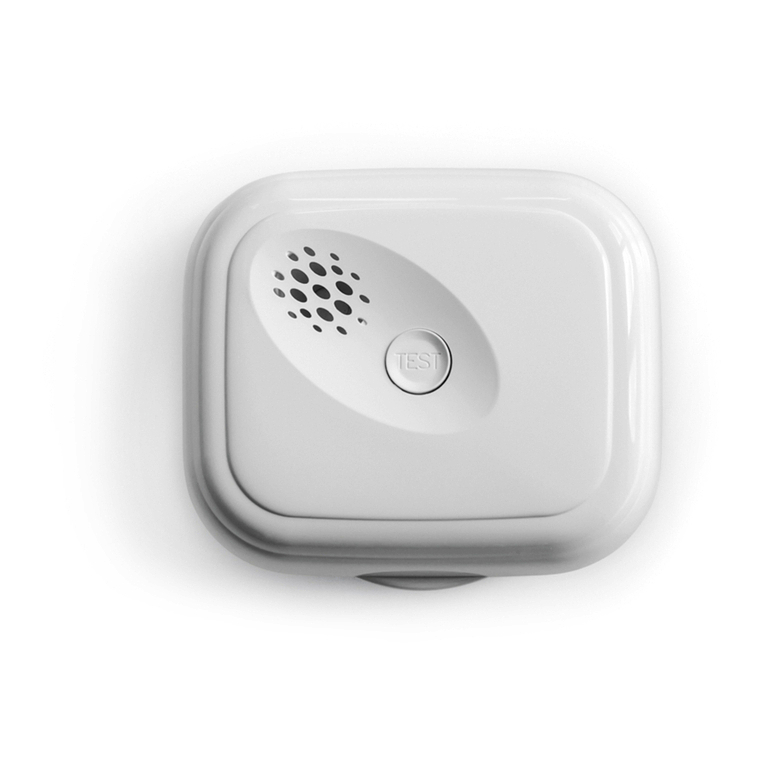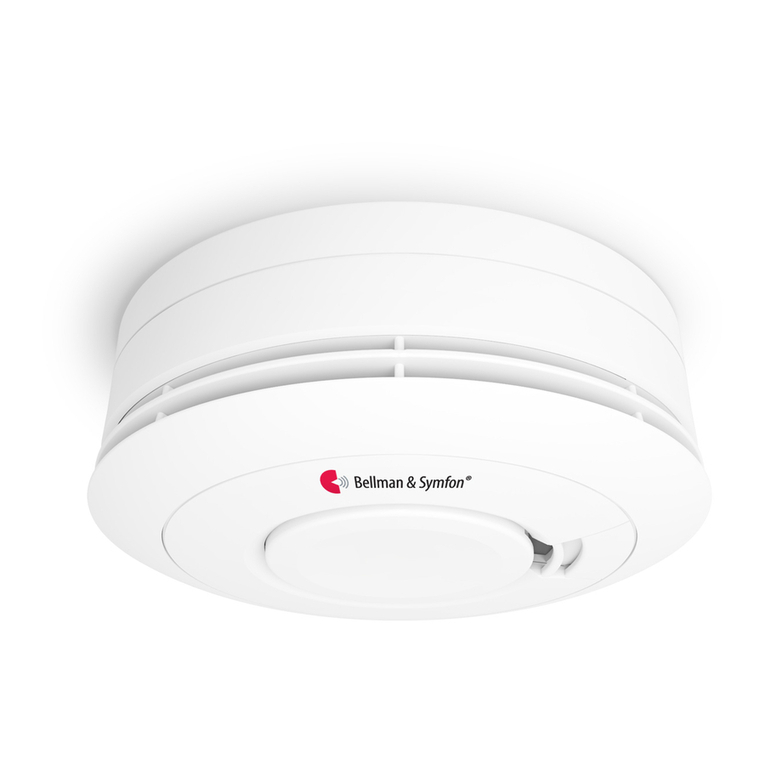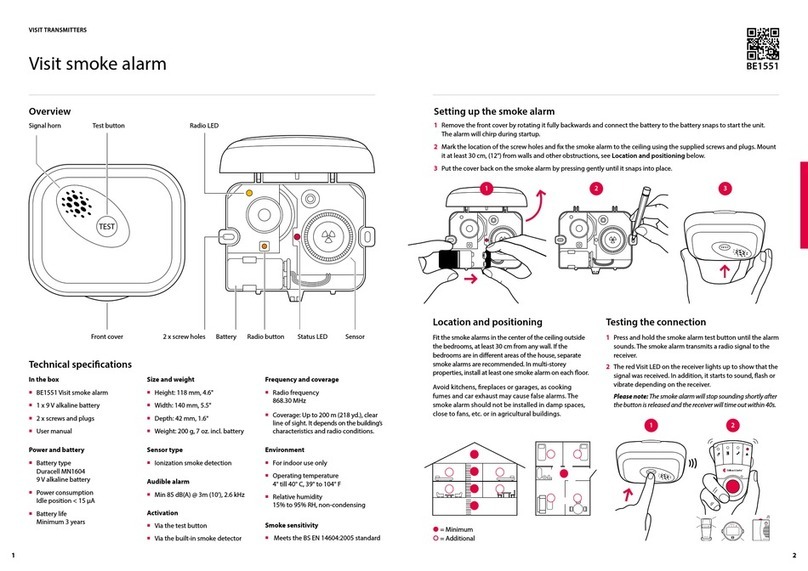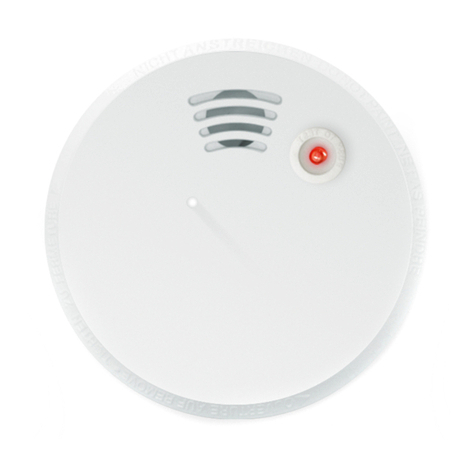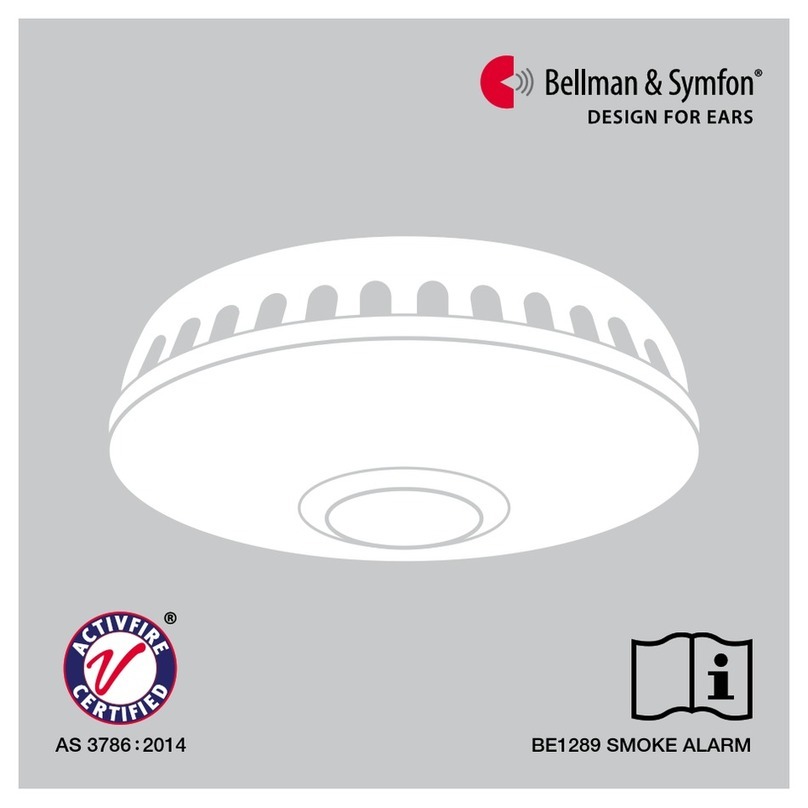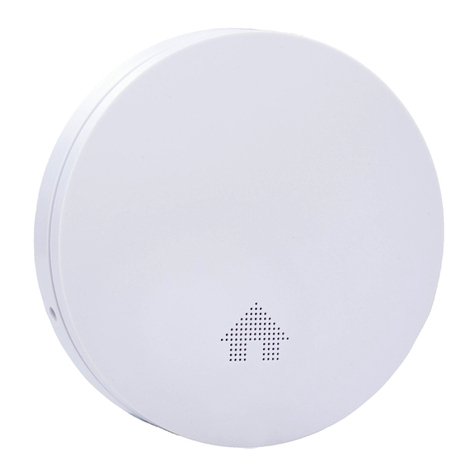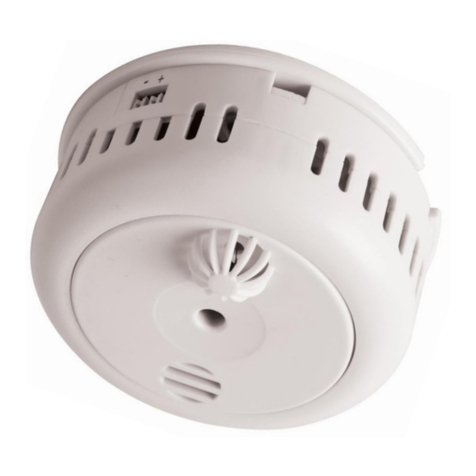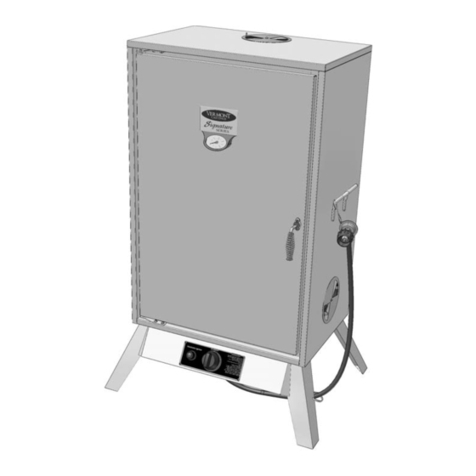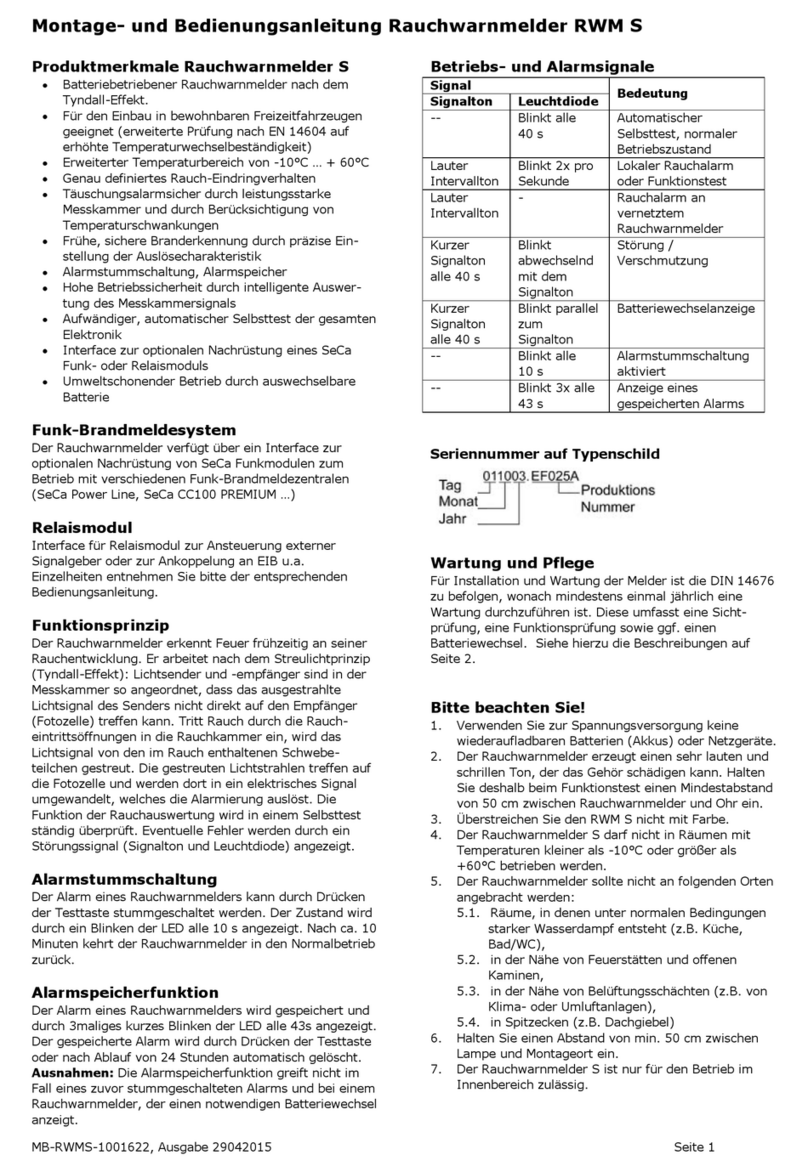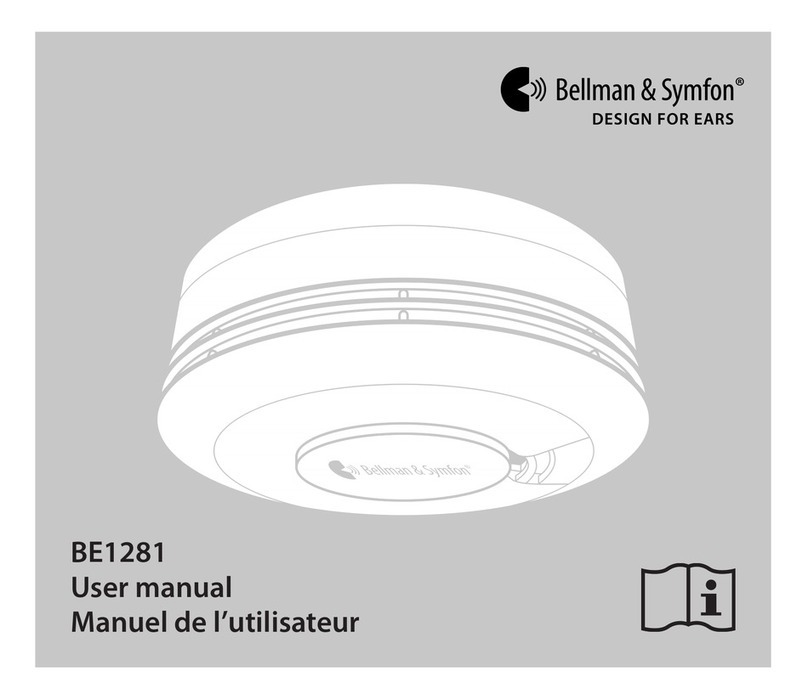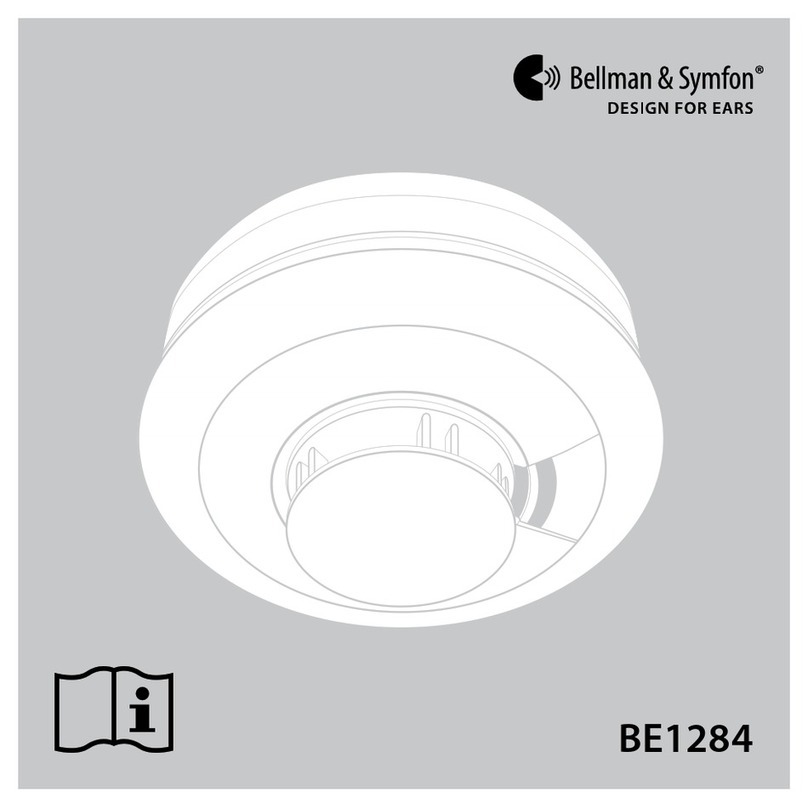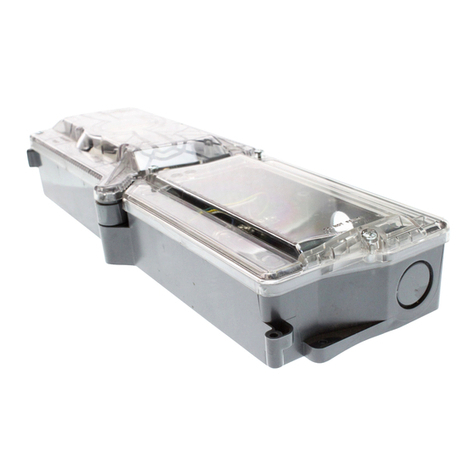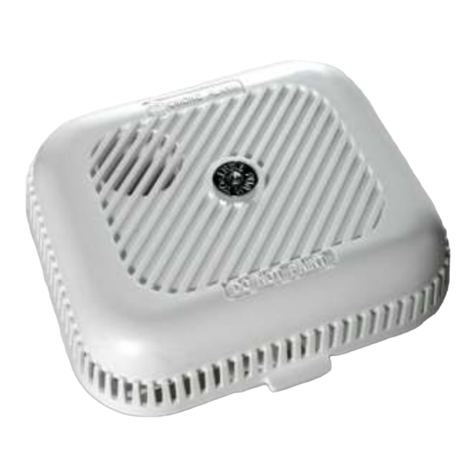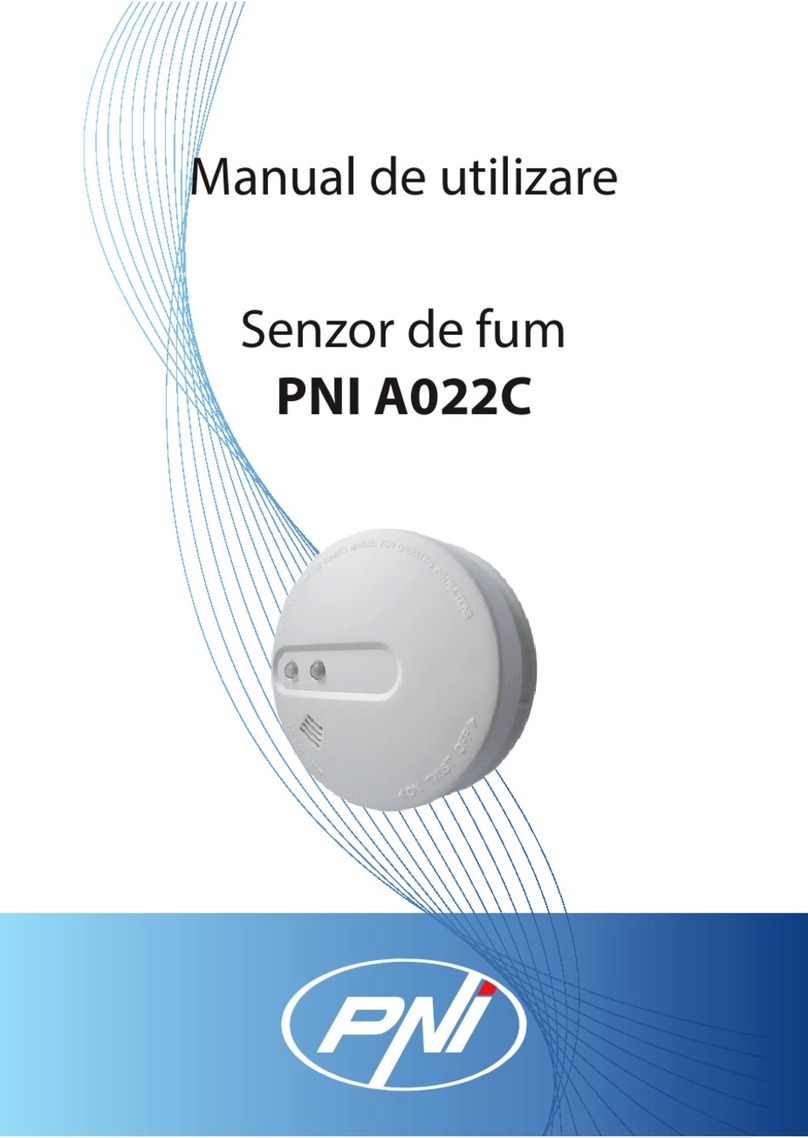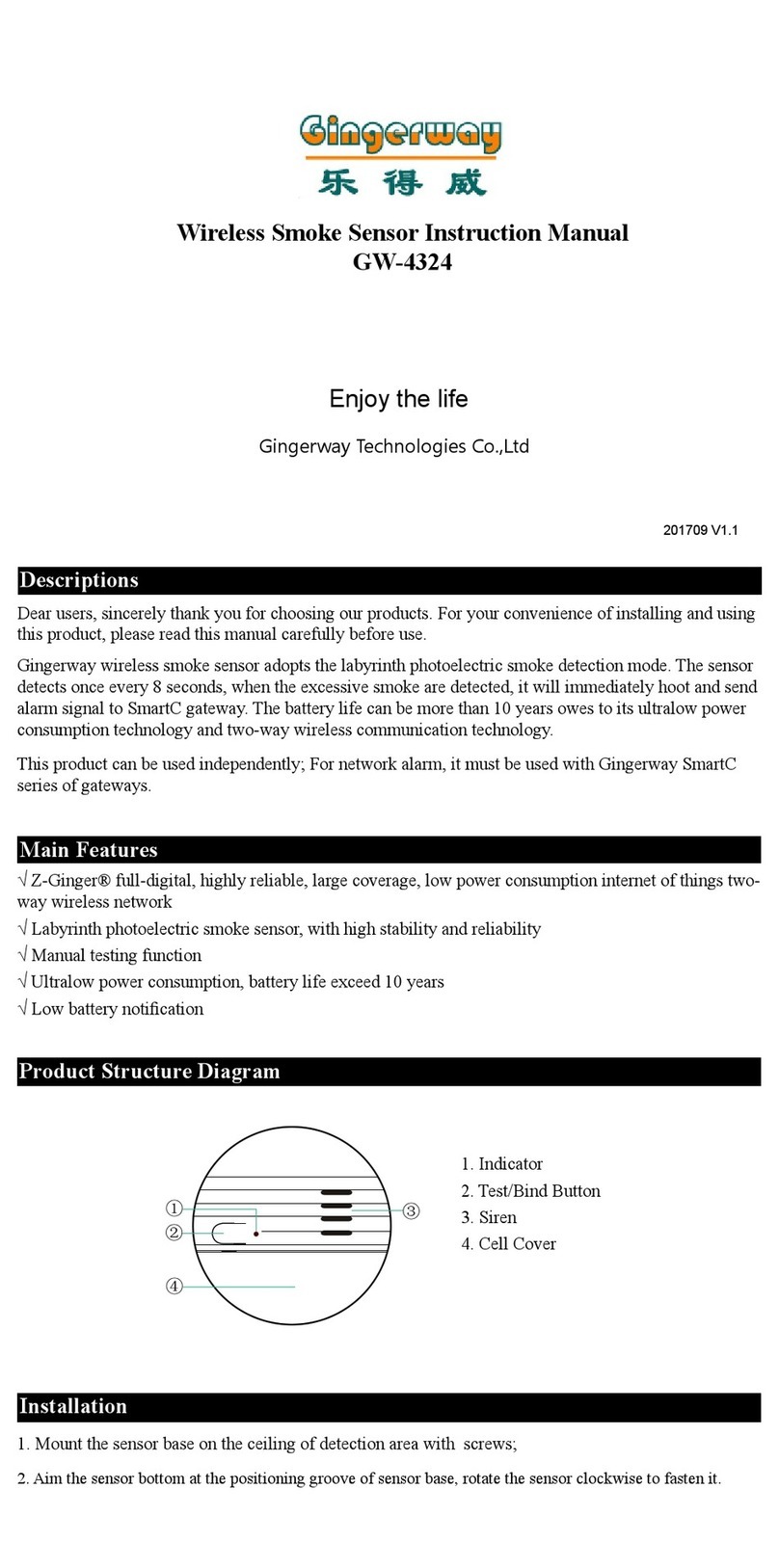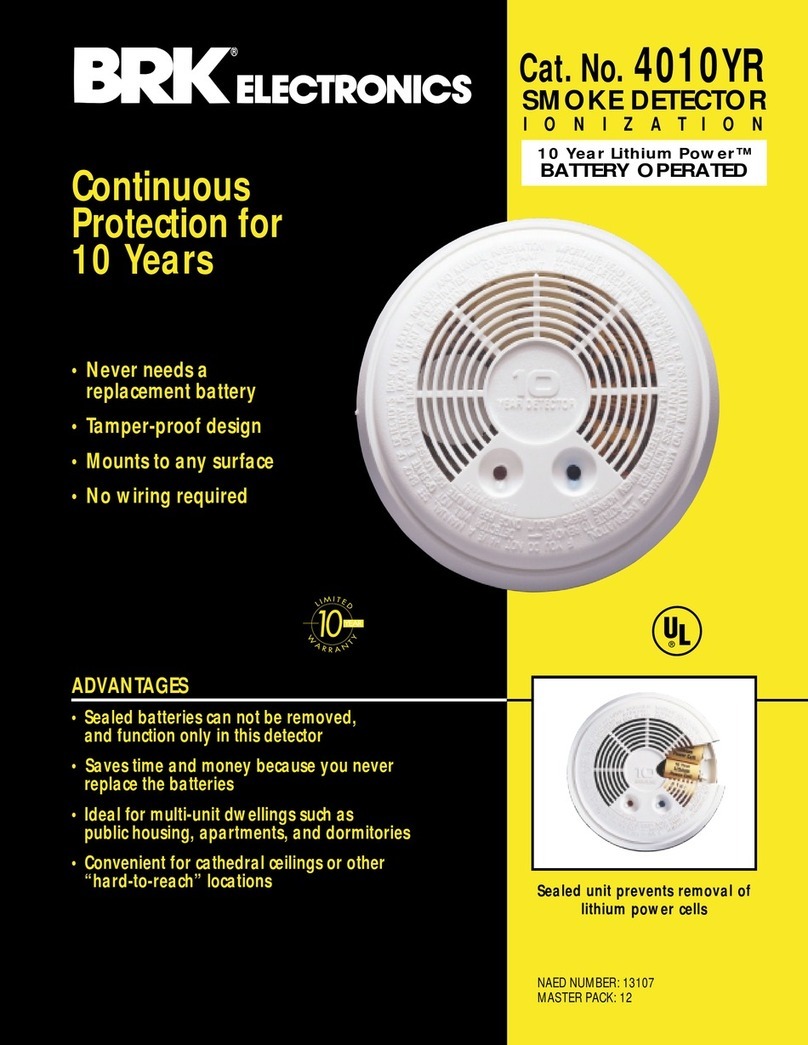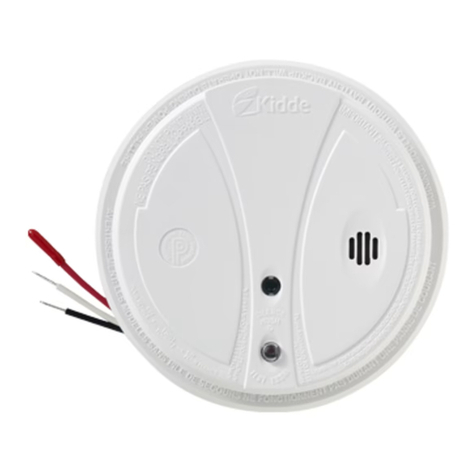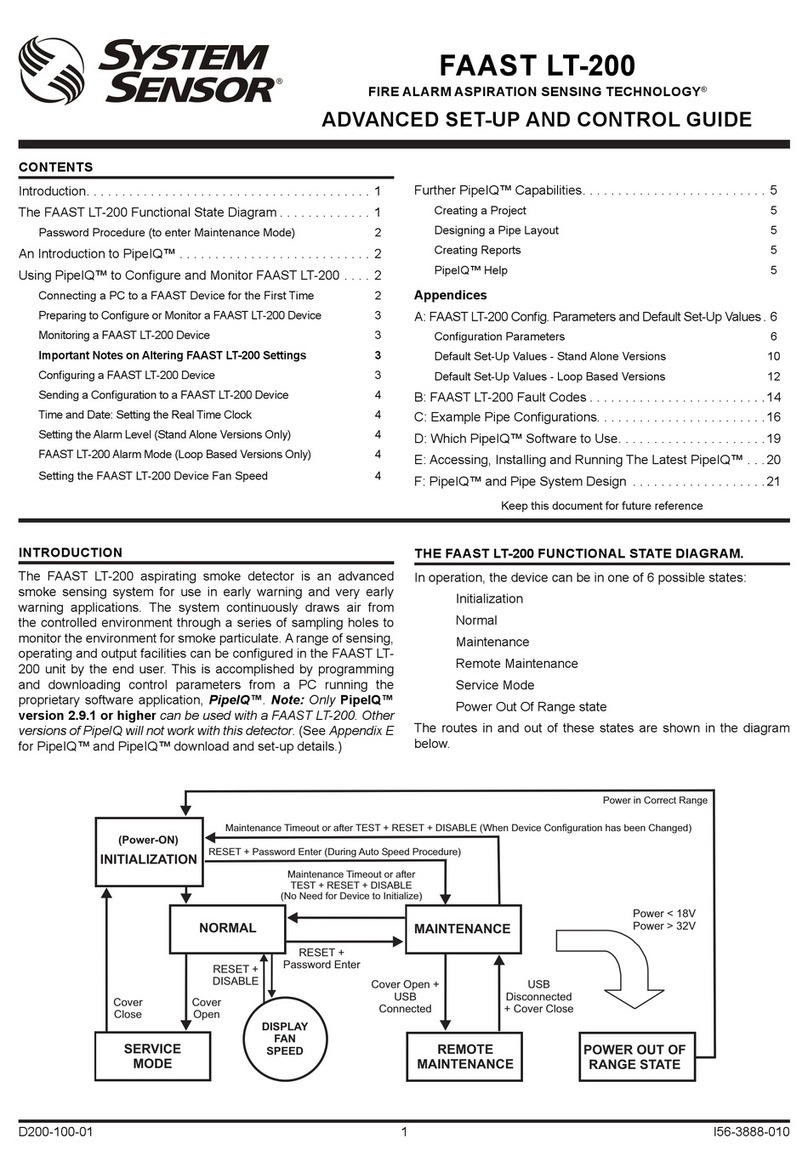
5453
ickering may aect the unit.
Locate away from very dusty or dirty areas as dust build-up in the chamber can make unit
too sensitive and prone to alarm. It can also block the insect screen mesh and prevent
smoke from entering the chamber.
Do not locate in insect infested areas. Small insects getting in to the chamber can
cause intermittent alarms.
Testing and maintenance
Your smoke alarm is a life saving device and should be checked periodically. Regularly check
that the status indicator on the smoke alarms ashes once a minute to show the units are
powered. Replace the battery if the blinking stops.
Manually testing your smoke alarm
It is recommended that you test your smoke alarms after installation and then at least week-
ly to ensure the units are working. It will also help you and your family to become familiar
with the sound of the alarms.
Press and hold the test button until the alarm sounds, see Installation. The alarm will
stop sounding shortly after the button is released.
If you are using a supplementary Visit receiver, check that the red Visit LED on the receiver
lights up and that it starts to sound, ash or vibrate depending on the receiver.
See Installation and the corresponding Visit receiver user manual.
The receiver will time out within 40 seconds.
Repeat this procedure for all other smoke alarms in the system.
Warning: Do not test with ame.
This can set re to the smoke alarm and damage the house. We do not recommend testing
with smoke as the results can be misleading unless special apparatus is used.
When you press the test button it simulates the eect of smoke in a smoke alarm which
it could experience in a real re. So, there is no need to test smoke alarms with smoke or
ame.
Nuisance alarms
If, when the alarm goes o, there is no sign of smoke, heat or noise to indicate that there is a
re, you should rst get your family into a safe place, before you start investigating.
Check the house carefully in case there is a small re smouldering somewhere.
Check whether there is some source of smoke or fumes, for example cooking fumes
being drawn past the smoke alarm by an extractor. If so, simply fan the smoke away with
a newspaper or similar.
If the cause of the alarm is not clear, it should be assumed that it is due to an actual re
and the dwelling should be evacuated immediately.
Please note: If there are frequent nuisance/false alarms it may be necessary to re-locate the
smoke alarm away from the source of the fumes. We recommend the use of a heat alarm in the
kitchen area to avoid such nuisance alarms.
Cleaning your smoke alarm
Clean your smoke alarm regularly. Use a soft bristle brush or the brush attachment of your
vacuum cleaner to remove dust and cobwebs from the sides and cover slots where the
smoke enters. Keep cover closed while cleaning. Do not vacuum or brush inside the smoke
alarm.
Warning: Do not paint your smoke alarm.
Other than the maintenance and cleaning described in this leaet, no other customer
servicing of this product is required. Repairs, when needed, must be performed by the
manufacturer.
Dust & insect contamination
All smoke alarms are prone to dust and insect ingress which can cause false alarms. The lat-
est design, materials and manufacturing techniques have been used in the construction of
our alarms to minimise the eects of contamination. However, it is impossible to completely
eliminate the eect of dust and insect contamination, and therefore, to prolong the life of
the smoke alarm you must ensure that it is kept clean so that excess dust does not build up.
Any insects or cobwebs in the vicinity of the smoke alarm should be promptly removed. In
certain circumstances even with regular cleaning, contamination can build up in the smoke
sensing chamber causing the alarm to sound. If this happens the alarm must be returned
for servicing or replacement. Contamination is beyond our control, it is totally unpredictable
EN












